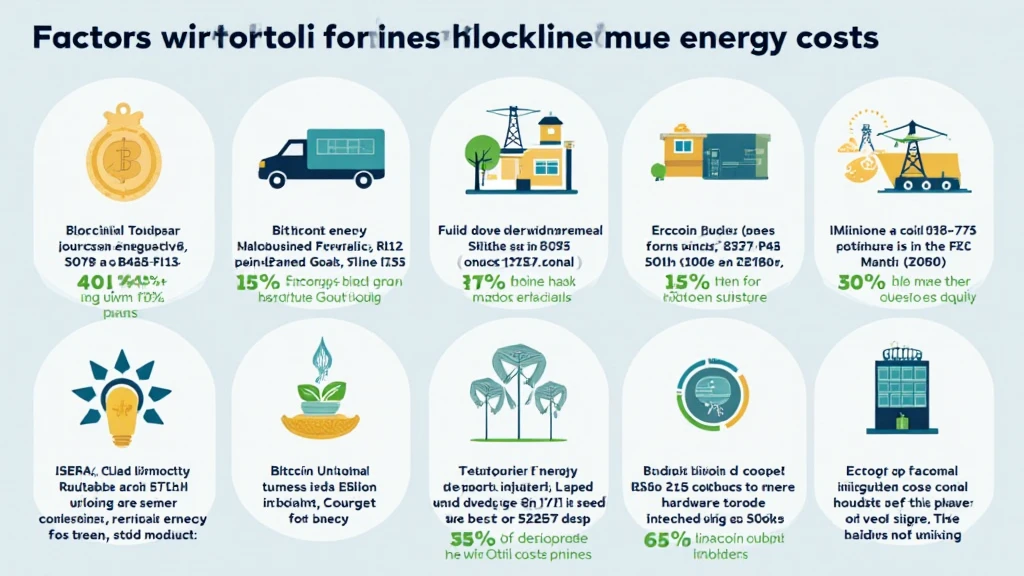Introduction
As the world continues to embrace cryptocurrency, Bitcoin mining has become an increasingly profitable venture. However, with rising global energy prices, understanding Bitcoin mining farm energy costs is crucial for miners looking to maintain profitability.
According to recent reports, the annual energy consumption of Bitcoin mining is equivalent to that of Norway. With $4.1B lost to crypto hacks in 2024, miners must be strategic in not only securing their assets but also optimizing their operational costs.
This article will delve into the various factors that contribute to Bitcoin mining farm energy costs and offer insights on how to navigate these challenges effectively, especially focusing on the growing market in Vietnam.

Factors Influencing Energy Costs
1. Electricity Prices
Electricity is the lifeblood of Bitcoin mining farms. The fluctuating electricity prices directly impact the overall cost of operations. Various countries have different rates, which can lead to significant variations in profitability for miners:
- Vietnam: The growth rate of Bitcoin users in Vietnam has surged by over 60% in the past two years, prompting local miners to invest heavily in efficient energy solutions.
- United States: States like Texas offer favorable energy prices due to an abundance of natural resources.
- China: Previously a dominant force in mining, the energy crackdown has shifted the landscape significantly.
2. Hardware Efficiency
It’s essential to consider the efficiency of mining hardware. ASIC miners vary in energy consumption, leading to different operational costs. For instance, newer models might consume only 30% of the energy that older models use. This difference can dramatically affect your bottom line:
- Efficiency = Hash Rate / Power Consumption
- Miners should invest in high-efficiency models like the Antminer S19 Pro, ideally seeing power efficiency rates under 30 J/TH.
3. Cooling Systems
Bitcoin mining generates significant heat, leading to the need for adequate cooling systems:
- Air Cooling: Cheaper but less efficient, leading to higher overall energy costs.
- Liquid Cooling: More effective, allowing for higher performance without excessive energy consumption.
The choice of cooling technology will influence electricity costs and operational efficiency.
4. Location and Climate
The geographical location of mining operations can have a profound impact on energy costs. For instance, cooler climates reduce the need for additional cooling, and locations with favorable energy regulations can be more beneficial:
- Countries with colder climates like Canada often attract miners because of reduced cooling expenses.
- In Vietnam, miners are pushing for renewable energy solutions to align with government sustainability policies.
Strategies for Minimizing Energy Costs
1. Harnessing Renewable Energy
With the growing emphasis on sustainability, many Bitcoin miners are shifting towards renewable energy sources such as solar and wind power:
- Vietnam: The government has invested in solar farms, allowing miners to tap into inexpensive, sustainable energy sources.
- Solar thermal miners can significantly lower their carbon footprints and operational costs.
2. Optimizing Operations
Regularly auditing your operations can lead to substantial savings:
- Track energy consumption rigorously.
- Consider power management tools that allow for adjustable settings based on energy prices.
3. Joining Mining Pools
Pooling resources with other miners has several benefits:
- Shared resources lead to reduced costs.
- Collective bargaining can lower electricity rates, enabling access to cheaper energy plans.
The Future of Bitcoin Mining in Vietnam
The traction of Bitcoin mining in Vietnam is set to grow, fueled by favorable regulations and increasing user engagement:
- The local government is keen on fostering a healthy cryptocurrency ecosystem.
- With an expected annual growth rate of 30% in the local cryptocurrency market, opportunities abound for miners to thrive.
Conclusion
In summary, navigating the intricacies of Bitcoin mining farm energy costs is vital for miners looking to maintain profitability amidst a complex global landscape. By understanding the factors influencing these costs and implementing smart strategies, miners can optimize their operations and reduce expenses.
As the Vietnamese crypto market continues to grow, it is essential to leverage local advantages while focusing on energy efficiency to maximize returns. For miners, the future holds promising prospects through continuous adaptation and strategic planning.
For more information about engaging in profitable cryptocurrency operations, visit cryptopaynetcoin.
Virtual Expert Name – An authority in blockchain technology with over 15 published papers and lead auditor on some reputable digital asset projects.


